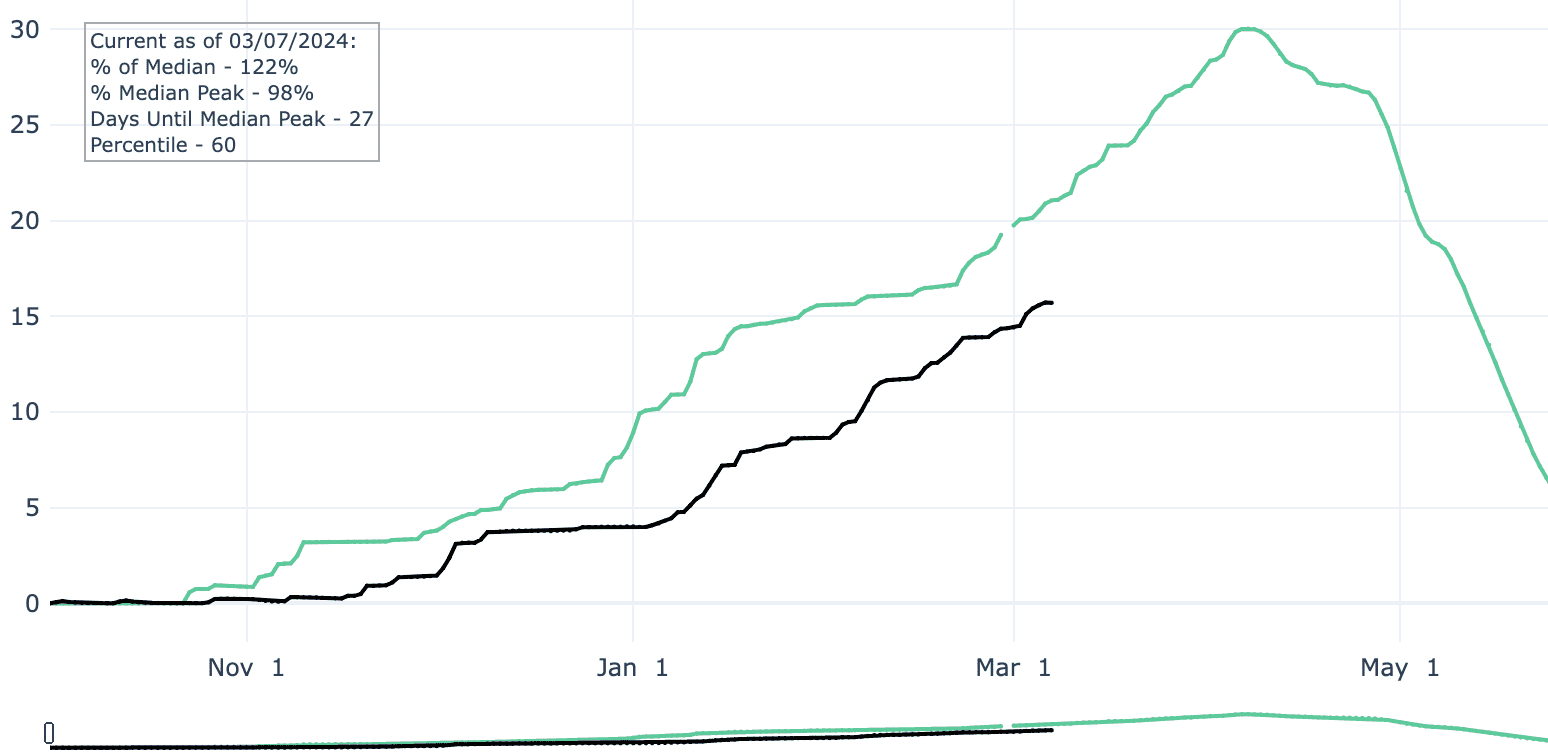Environment
Utah reports above average snow water equivalent for March, reservoirs nearly full statewide

The docks at Great Salt Lake State Park. Photo: TownLift // Kevin Cody.
Utah in a 'good position' water-wise as spring approaches
PARK CITY, Utah — Although no match for Utah’s record-breaking winter of 2023, officials have reported that the state’s water outlook for March is encouraging.
According to the Natural Resources Conservation Service’s March 1 Water Supply Report, the state has received 157% of its typical amount of snow water equivalent (SWE) for the month.
“Our statewide snowpack has been consistently above normal since the beginning of February, which has really put Utah in a good position as we head into spring,” said Candice Hasenyager, director of the Utah Division of Water Resources.
The report also found that soil moisture remains favorable, which is essential for good conditions as the state moves into spring runoff season. Stream gauges are also showing a widespread positive trend, with 60% currently flowing normal to above-normal levels.
The Great Salt Lake has also seen a net increase of 1.8 feet since October. This is a positive change that is being enhanced by actions and investments from conservationists and the Utah State Legislature over the past three years to preserve and protect the lake. SWE in the GSL basin is currently 123% of normal. February precipitation in the GSL basin was 183% of normal, which brings the water year precipitation value to date to 118% of normal.
Reservoirs statewide are also at 83% capacity, 22% higher than normal and in large contrast to last year when reservoirs statewide were around half full.
“Our reservoirs are our water savings account,” Hasenyager said. “This critical infrastructure provides us with the water security we have today. Continued studies and investments in water infrastructure will be needed for Utah’s future generations.”

As of March 7, Utah’s SWE was at 15.7 inches. At the same time in 2023, the SWE was 20.9 inches.
“It’s just another symptom of our changing climate. But last year was really a really stellar year,” said Michael Sanchez, public information officer for the Utah Division of Water Resources. “We had that record breaking year that allowed us to store a ton of water in our reservoirs.”
Despite March’s positive outlook, the Utah Division of Water Resources is continuing to promote initiatives such as the Agricultural Optimization Program for farmers and SlowtheFlow.org for residents to encourage water conservation and management. These programs aim to help Utahns become more drought-resilient by preparing for future conditions.
“The last few years Utahns have really stepped up with their conservation efforts, and we really want that to still continue,” Sanchez said. “We’ve had stellar years, we have plenty of water, but we never know when that next dry year is going to eventually come.”



















